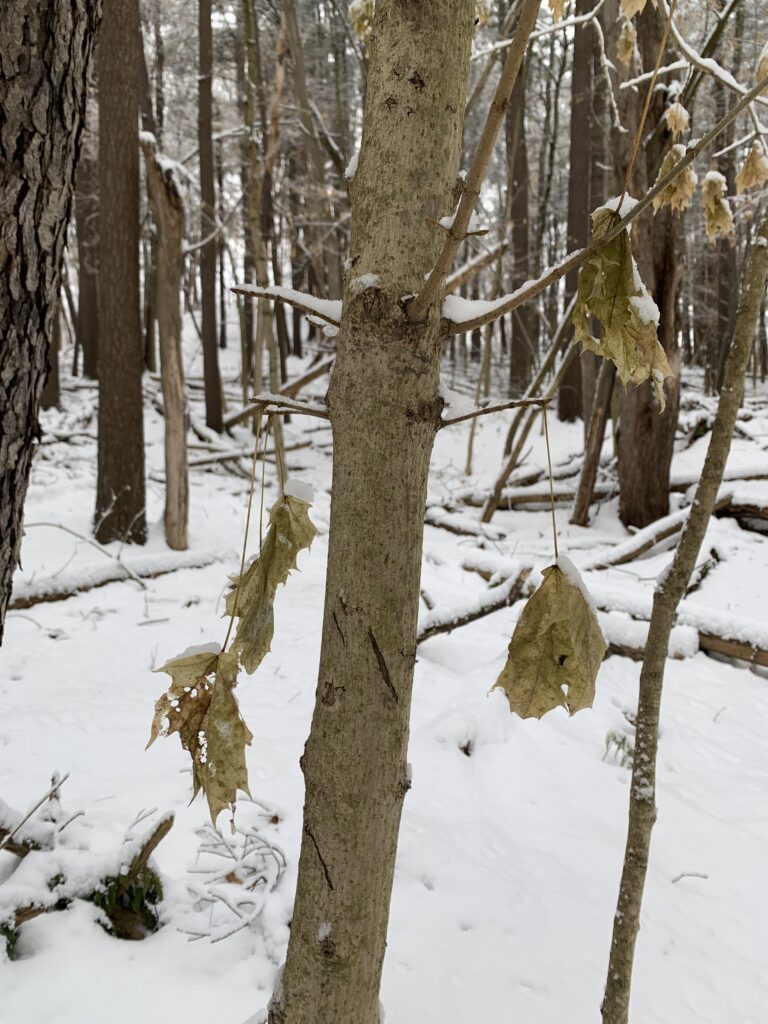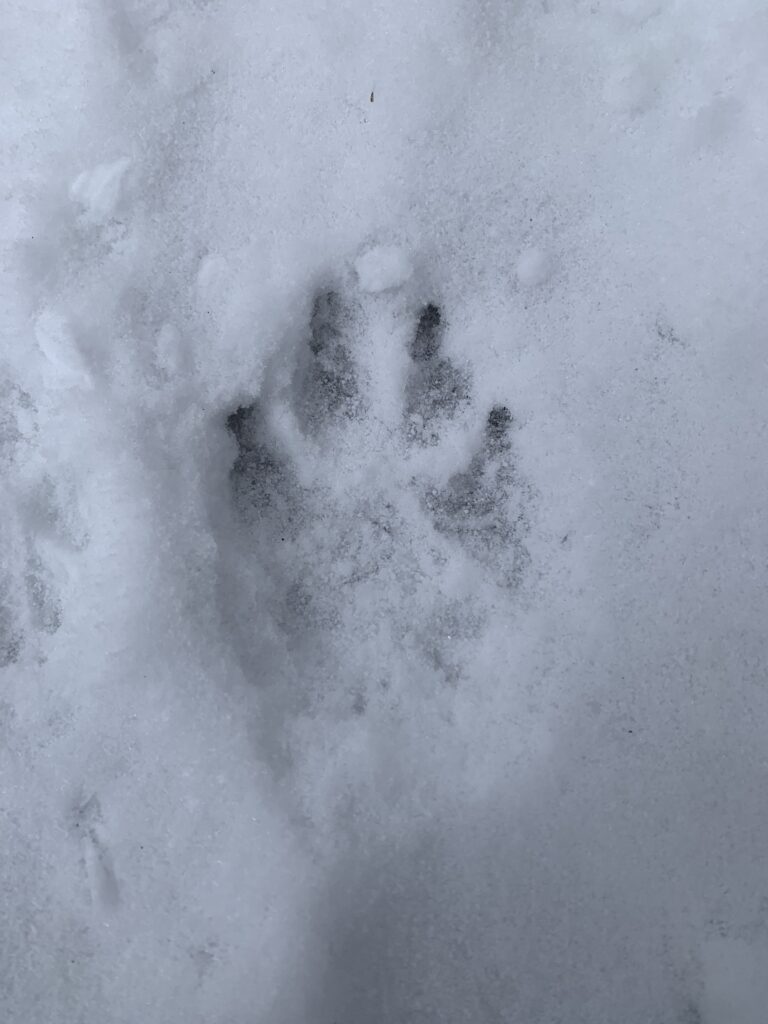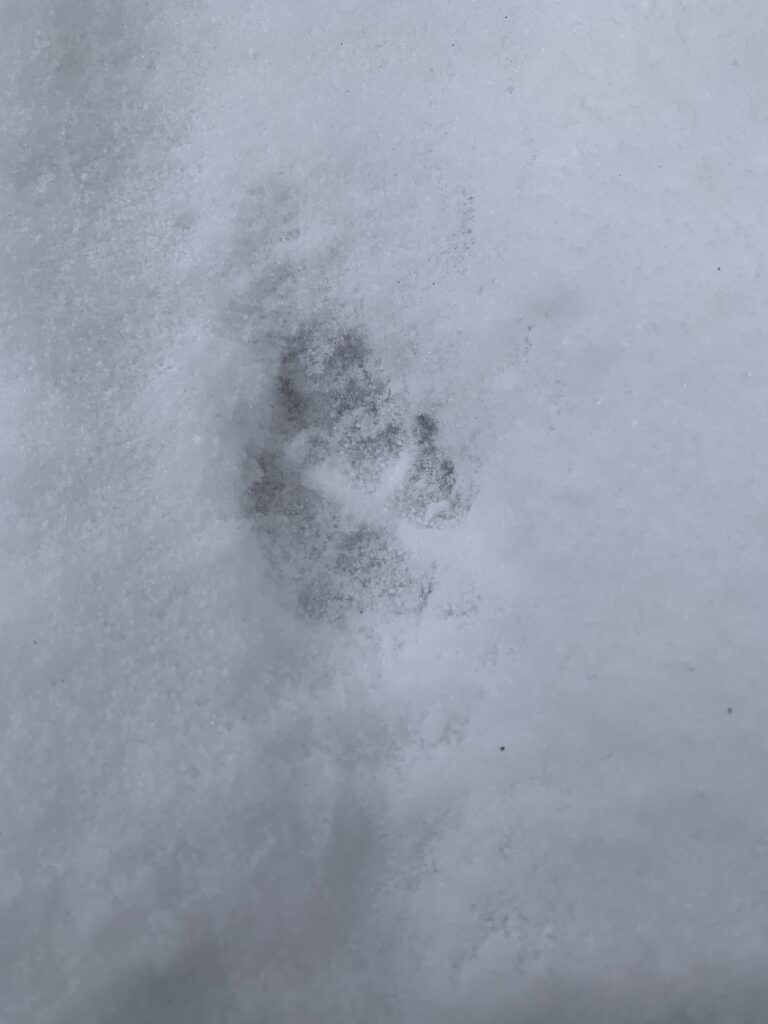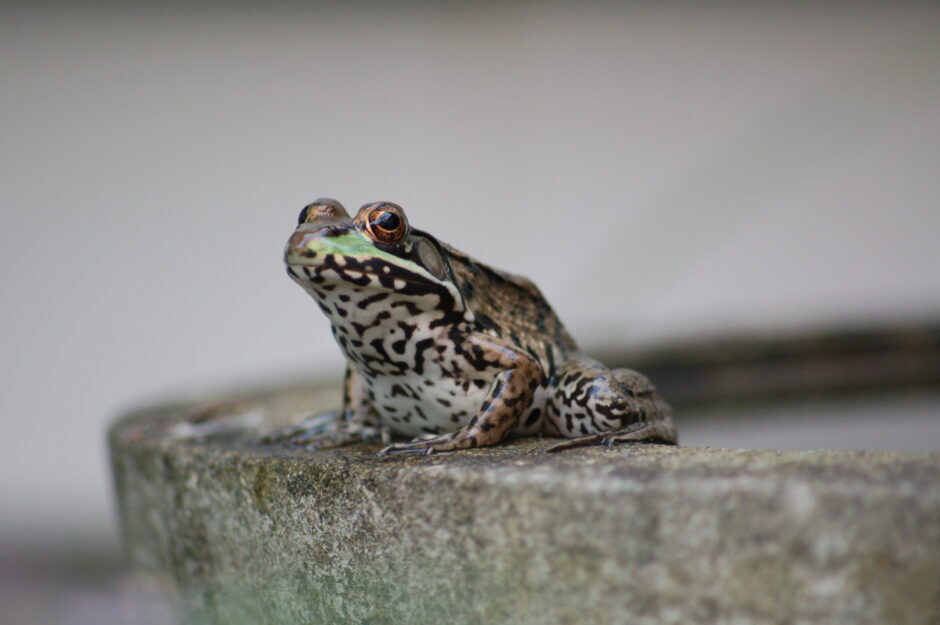After over a month apart from my last visit to my spot in Centennial Woods, it was time to return and observe how it has changed since last year. With the temperatures finally dropping enough to resemble a true Vermont winter, I was eager to see what I could find evidence of in the fresh snow we received this past week.

The first thing I noticed in regards to phenology was the now complete dormancy of the deciduous trees at my location. The unseasonably warm temperatures last year left some maple trees to still retain their leaves, the last bit of sustinence flowing through the leaves. However, it was clear that now, the trees have finally ceased any nutrient flow and are now dormant for the winter, evidenced by the heavy drooping and browning of the leaves.

Even with the supposed dormancy of the woods at this time of year, there were still signs of the pulsating life underlying it all. I heard a few bird calls and one was loud enough to be caught on camera. See if you can identify the species, and let me know!
Mammals
In addition to the plants and birds at this location, I was eager to see if I could spot any mammal prints in the snow, as I have not before observed many mammals here before beyond a squirrel or two. Though I did not observe any prints in the unbroken blanket of snow near the fern forest, the trail near the edge of my phenology site yielded some interetsing clues as to what animals roam around Centennial Woods.

A promising print that I was able to spot was right near the trail, which could symbolize that the trail acts as an important route for mammals as well as humans. There seems to be 4 main toes and an “x” across the middle of the print, indicating this could be a fox, coyote, or even a wolf. However, I am not nearly well trained enough to truly identify it for sure. What do y’all think?

There was another print nearby, pictured above, which was smaller than the original print I found, with the “x” still being distinguishable. Maybe it is a smaller individual of the same species, or maybe it is an entirely different species altogether! It was really hard to tell considering the track patterns were disrupted by the presence of many human prints along the same trail.
Conclusion
Even with the arrival of winter in Vermont, there is plenty still going on. Though the last vestiges of a warm fall fully faded away at my phenology spot, the activity of birds and mammals in the area show that the animals here are remaining active and are on the move as we ourselves move through January.
